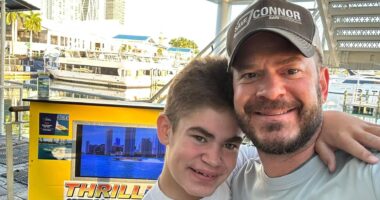Parents, Caregivers Vital in Sanfilippo Disease Research: Study
Reporting symptoms, signs of disease assists research efforts, scientists say

According to parents of children with Sanfilippo syndrome, developmental delays, hyperactivity, sleep disturbances, hearing loss, and recurrent infections were the most common features of the condition.
This study adds to the natural history of Sanfilippo syndrome and underscores the vital role parents and caregivers play in disease research, the authors noted.
The study, “What Can We Learn from the Parents of Children Affected with Mucopolysaccharidosis Type III-A in Israel?” was published in Molecular Syndromology.
Sanfilippo syndrome, or mucopolysaccharidosis type III (MPS III), is a genetic condition marked by childhood dementia. Other symptoms include behavioral problems, intellectual disability, coarse facial features, and degenerative joint disease. Although its natural history has been described in several studies using information from medical records and physicians’ assessments, data from parents and caregivers are scarce.
To learn more about Sanfilippo’s natural history, researchers at multiple sites in Israel designed a retrospective questionnaire study that investigated different signs and symptoms of the disease using data provided directly by both.
Parents of eight Sanfilippo patients in four unrelated families were interviewed, covering different aspects of the disease including demographics, clinical, developmental, behavioral, neurological, and immunological manifestations.
Among the affected individuals, six (75%) were male (ages 3–23), and all were diagnosed with Sanfilippo subtype A, the most common type.
Within the families, the average time from onset to diagnosis of the first affected sibling was about two years and the average age at their diagnosis was just over 6 years. Parents said they became suspicious of an illness due to speech delays (85.7%) and coarse facial features (85.7%). The older siblings’ diagnosis prompted the diagnosis of the younger affected siblings.
Across all affected children, parents and caregivers reported global developmental delays, sleep disorders, hyperactivity, hearing impairment, and recurring infections of the lungs or ears. Less common features included coarse facial features, hernia, diarrhea, and skeletal abnormalities.
Developmental milestone assessments found most began walking at 12–18 months. Four said their first words at 12 months, two by 24 months, and none were toilet trained at the time of the study.
Seizures occurred in three children (37.5%), with an age of onset ranging from 6 to 11.5. Of these, two were treated with anti-seizure medications. Spasticity, an abnormal increase in muscle stiffness, was noted in three children (37.5%), and four (50%) reported difficulty swallowing.
All children displayed behavioral problems, including hyperactivity and a tendency to smile, and four (50%) cried for no obvious reason. Compared to unaffected siblings, three (37.5%) were described as timid or fearful.
Sleep difficulties were reported in all Sanfilippo children, with an average length of uninterrupted sleep of about five hours. While some showed sleeping problems from birth (57.14%), others started between ages 3 and 4 (42.82%). Two were treated for sleeping issues, and one child was diagnosed with obstructive sleep apnea and successfully treated.
The team also reported some degree of hearing loss in all children. Additional findings included hernias (50%) and skeletal abnormalities (25%). More than half (57.14%) underwent surgeries to remove tonsils or drain inner ear fluid buildup. Other surgeries included dental surgery, removal of adenoids, feeding tube insertion, and hernia repair.
“The results of this study add to the current knowledge regarding the natural history of individuals affected with [Sanfilippo syndrome] A, and underscore the important role which parents and caregivers play in the understanding of such rare neurodevelopmental disorders,” the researchers concluded.






